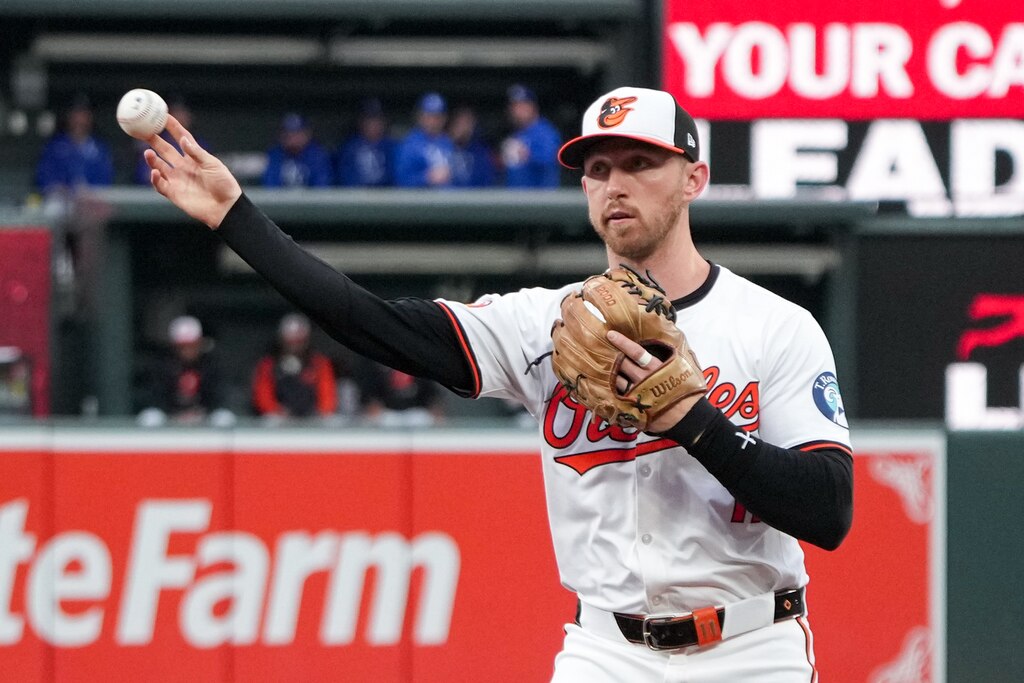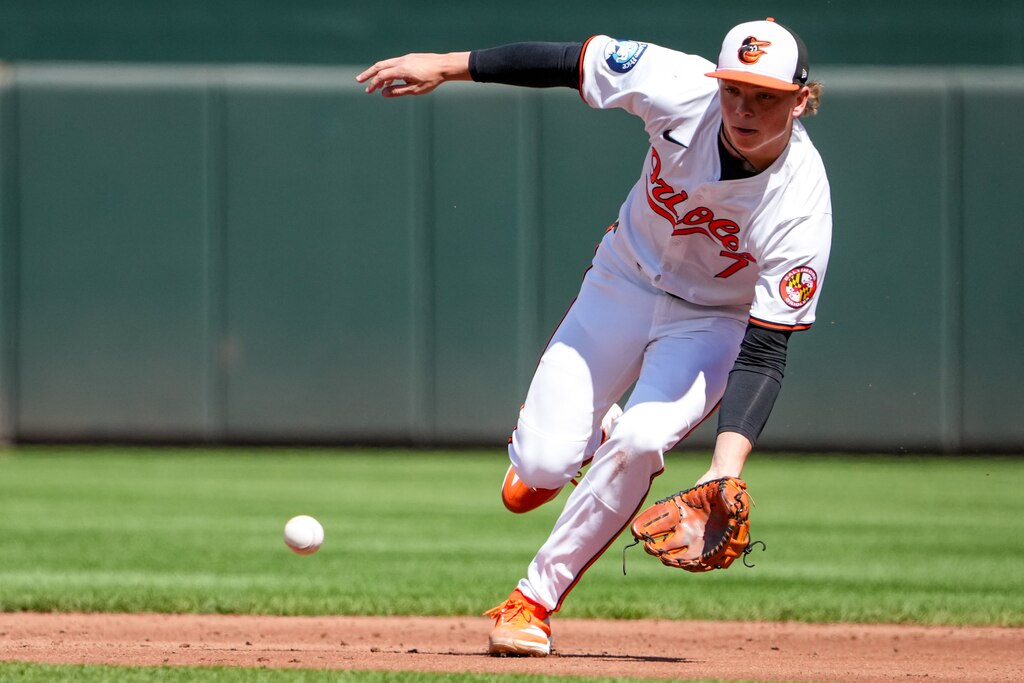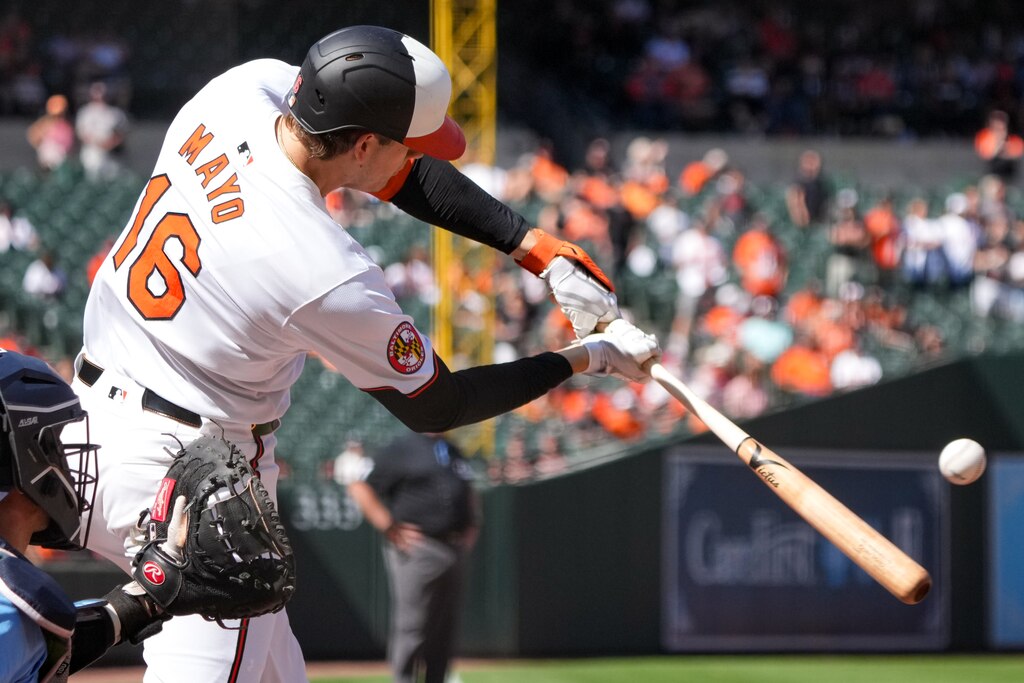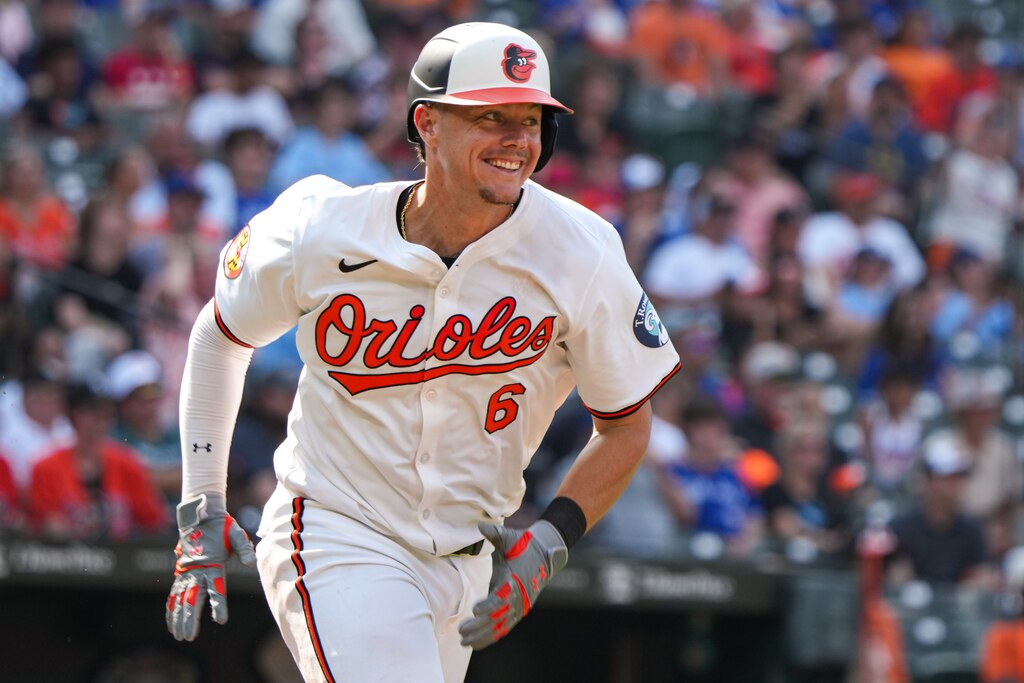Gunnar Henderson is expected to once again be one of the best players in Major League Baseball. When combining forecasts from ZiPS and Steamer — two of the most popular projection systems — Henderson finishes as the third-most valuable player, behind only Aaron Judge and Bobby Witt Jr.
There’s a reason the Orioles shortstop is on the cover of this year’s edition of MLB The Show. He’s a star, and he should continue competing at the highest levels of the game. According to FanGraphs, which averaged both projection systems, Henderson is expected to produce 6.7 wins above replacement (WAR).
He’s the heartbeat of the lineup in many ways, be it in the box or on the bases. And, barring an injury, Henderson’s everyday performances at shortstop will make the Orioles better. It was seen in 2024. When breaking down a team’s wins above average (WAA) by position, Baltimore’s shortstops (almost entirely Henderson) accounted for 6.8 WAA, the second most in the majors.
Look elsewhere along the Orioles’ infield, however, and the uneven performances fueled by youthful inexperience and injury are apparent.
The Baltimore Banner thanks its sponsors. Become one.
At second base, according to Baseball Reference, the Orioles combined for a below-average minus-0.2 WAA. At third, they combined for 0.4 WAA, only slightly above league average. They were the Orioles’ two lowest-ranked position player groups.
(We are using WAA here rather than WAR because WAA compares a player to the average major leaguer, while WAR compares him to a Triple-A replacement. The Orioles, as a team with World Series aspirations, require above-average players across the board.)
Despite that, the Orioles still won 91 games and made it to the postseason. But to be a more well-rounded lineup, Baltimore will need more steady production from its second and third basemen. Last year, the Orioles’ second basemen combined for a .214 average — 28th out of 30 major league teams. Their third basemen were better, with a .254 average (10th), but part of the reason their WAA was dragged down is that as a group, Orioles third basemen all performed below average defensively at the position, per Fielding Bible.
Still, the Orioles infield could be in line for improvement if certain factors line up — and in that case, Henderson won’t be a one-man wrecking crew on the dirt. These are the major considerations among Baltimore’s infielders for that to be the case.
A healthy year for Jordan Westburg

While in Los Angeles, during a downturn in the Orioles’ season when injuries began to pile up, outfielder Anthony Santander pointed to who he thought the team missed most: Jordan Westburg.
The Baltimore Banner thanks its sponsors. Become one.
Santander was probably right. The influence — and absence — of Westburg carried weight.
The stats for Baltimore’s second and third basemen might look a whole lot better if Westburg hadn’t missed nearly two months with a hand fracture. The Mississippi State product cemented his place in the lineup, be it at second or third, by hitting .264 with a .792 on-base-plus-slugging percentage.
A curious statistical aberration is that Westburg hit much better while playing third base than second base. When at third, he held an .845 OPS. As a second baseman, Westburg posted a .693 OPS, and he struck out 46 times while working just three walks.
That, in all likelihood, will not be the case this season. Wherever Westburg finds himself in the field, it should bring an offensive boost to either second or third.
When averaging out the ZiPS and Steamer projections, Westburg is expected to be the third-most impactful position player for the Orioles this year, behind Henderson and catcher Adley Rutschman. His baseline metrics on Statcast from 2024 help to illustrate why.
The Baltimore Banner thanks its sponsors. Become one.
Westburg was in the 80th percentile for average exit velocity (91.1 mph) and barrel rate (11.8%). And while he didn’t walk at a high rate (just 4.9%), his strikeouts were roughly league average and his expected weighted on-base average (a stat that gives more weight to hard-hit balls, sprint speed and launch angle) was .353. In other words, when Westburg makes contact, he does damage.
And having him healthy and available to play in more than 107 games should vastly improve the floor of Baltimore’s infield.
A Holliday to remember

During the Birdland Caravan, Jackson Holliday told reporters a succinct summation of how he can improve from a rookie year full of growing pains.
“I know what I need to do,” he said. “I know I need to cut down strikeouts and continue to hit mistakes and hit fastballs.”
Easier said than done, but a huge part of the Orioles’ struggles at second base last year was that Holliday didn’t hit the ground running when he arrived from the minors. That’s not an uncommon occurrence, especially among Orioles prospects, but it was felt nonetheless.
The Baltimore Banner thanks its sponsors. Become one.
Holliday hit .189 with a .565 OPS in 60 games. He struck out 18 times in his first 10 games while recording just two hits, then was sent back to the minors. In his longer second stint, Holliday leveled out with a .218 average and .650 OPS. And to look at just his final week, Holliday had seven hits in 18 at-bats.
That’s too small of a sample from which to take sweeping observations. But one observation that seems nearly guaranteed is: For a player who dominated the minors so thoroughly, it really must be up from here.
Holliday doesn’t need to be an instant All-Star for the Orioles to be good. If he can improve on what he managed in 2024, however, the production from Baltimore’s second basemen won’t seem as paltry.
One good sign was how hard Holliday hit the ball when he did make contact. The ball left his bat at 95 mph or faster 45.1% of the time last year. And while breaking balls caused him fits (he hit .118 against them and whiffed 38.6% of the time), Holliday did show he could catch up to and handle a big league fastball.
A longer opportunity for Mayo

If judging Holliday off 60 games feels like too small of a sample, try Coby Mayo and his 46 plate appearances.
The Baltimore Banner thanks its sponsors. Become one.
Mayo, 23, arrived and struggled much like Holliday. He played 17 games and hit .098. Despite next-level power displays in the minors, Mayo more often struck out (22 times to four walks), and he finished the season back at Triple-A Norfolk.
To write a top prospect off on that little information would be folly. Mayo still projects to be a middle-of-the-order bat. The question, though, is how to fit Mayo into the lineup.
Primarily a third baseman, Mayo can also slot in at first base if required. The Orioles seem fairly set at first, however, with Ryan Mountcastle and Ryan O’Hearn returning. And at third, a combination of Westburg and Ramón Urías is likely. It’s not clear, either, if Mayo can make the bench out of spring training, should infielder Jorge Mateo be ready to return from elbow surgery or the Orioles decide to begin the season with five outfielders.
With that grouping in mind, even a strong spring for Mayo might not be enough to crack the initial 26-man roster. But at some point, Mayo will need an extended opportunity to prove that a stellar Triple-A career can translate to major league success.
A shorter wall to scale

O’Hearn and Mountcastle supplied the Orioles with consistent production last year at first base, but that still amounted to a combined .725 OPS for whomever was patrolling that position. That finished 18th in the majors.
The Baltimore Banner thanks its sponsors. Become one.
But the Orioles could benefit from a physical change — not to a player, but to Camden Yards.
By bringing in the left-field wall at Oriole Park, life may become less demoralizing for Mountcastle. After the Orioles moved the wall deeper in 2022, no player had more home runs robbed by the new dimensions than Mountcastle (11), according to Statcast.
Between 2022 and 2024, Mountcastle hit 53 homers and posted a .745 OPS. If he had 11 more on his ledger, Mountcastle’s OPS would have been .768 — a mark that would have made him the 13th-most productive first baseman across those three seasons, as opposed to his place as the 19th.
“It’s a good feeling knowing that you can pull the ball again and get good results out of it,” Mountcastle said during the Birdland Caravan. “Hopefully I can, and we’ll see what happens.”
If he can, and a few of those balls fly out of the yard, more than just second and third base will see an improvement in 2025.





Comments
Welcome to The Banner's subscriber-only commenting community. Please review our community guidelines.